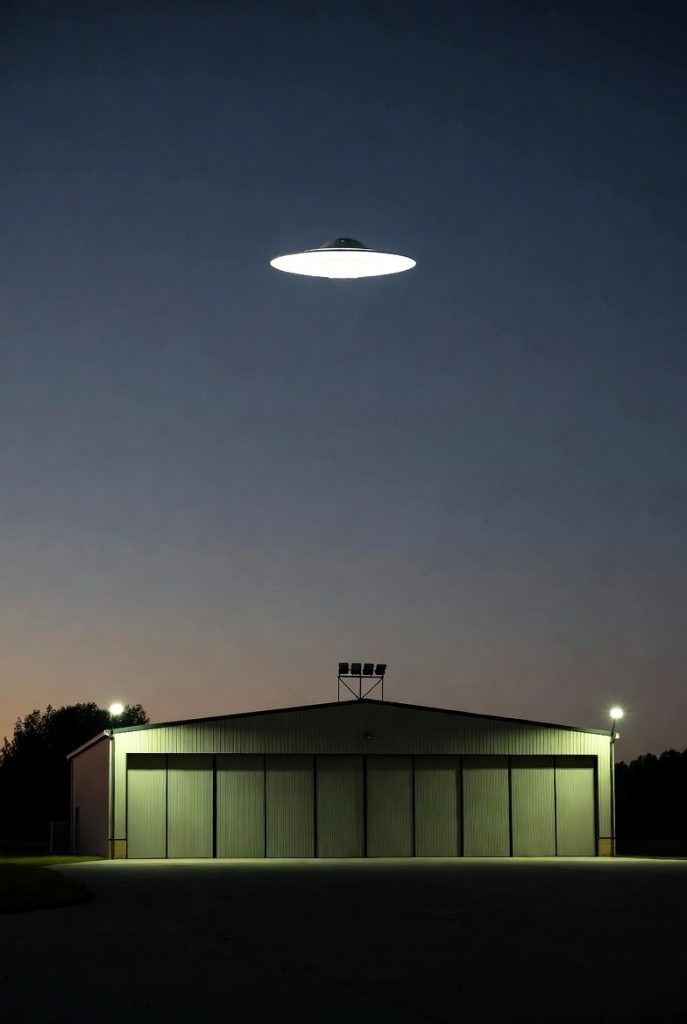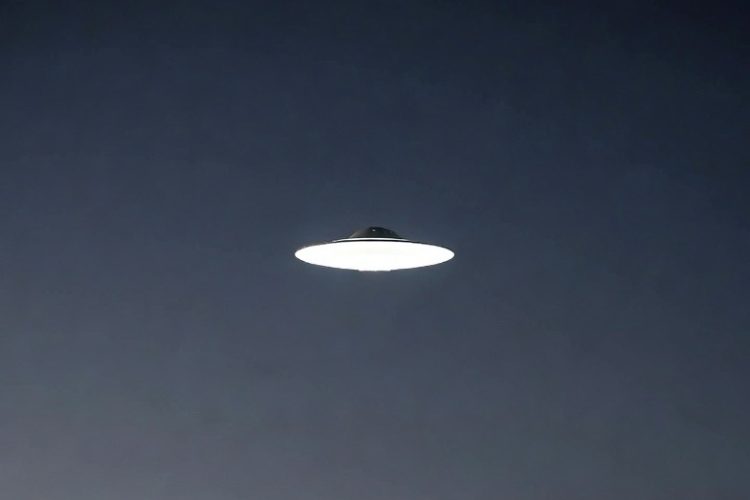Project Blue Book was a U.S. Air Force program that studied UFOs from 1952 to 1970, aiming to assess their threat to national security and scientifically analyze the data. It collected 12,618 UFO reports, most of which were explained as misidentifications of natural phenomena or conventional aircraft. A small percentage remained unexplained. The program’s investigations included high-profile incidents like the Lubbock Lights, Washington D.C. UFOs, and the Portage County UFO chase. Despite conclusions that UFOs posed no threat, conspiracy theories persisted about cover-ups and hidden extraterrestrial evidence. Declassified documents later suggested that Blue Book may have served as a public front for more classified investigations. Today, the legacy of Blue Book continues in popular culture and ongoing UAP research.
Long Version
Project Blue Book was a series of systematic studies of unidentified flying objects (UFOs) conducted by the United States Air Force (USAF). Started in 1952, it was the third study of its kind, the first two being projects Sign (1947) and Grudge (1949). A termination order was given for the study in December 1969, and all activity under its auspices ceased in January 1970. Project Blue Book had two goals: to determine if UFOs were a threat to national security, and to scientifically analyze UFO-related data.
By the time Project Blue Book ended, it had collected 12,618 UFO reports, and concluded that most of them were misidentifications of natural phenomena (clouds, stars, etc.) or conventional aircraft. According to the National Reconnaissance Office a number of the reports could be explained by flights of the formerly secret U-2 and A-12 aircraft; a small percentage of UFO reports were classified as unexplained, even after stringent analysis. The UFO reports were archived and are available under the Freedom of Information Act, but names and other personal information of all witnesses have been redacted.
Background
Public UFO reports increased significantly after pilot Kenneth Arnold’s 1947 sighting of nine crescent-shaped objects near Mount Rainier, which popularized the term “flying saucers.” In response, General Nathan F. Twining advocated for a formal study, leading to Project Sign in 1947 at Wright-Patterson Air Force Base. Project Sign explored the extraterrestrial hypothesis but its findings were rejected due to insufficient evidence. It was replaced by Project Grudge in 1949, which focused on debunking sightings as natural phenomena, mass hysteria, or hoaxes. Amid Cold War tensions and high-profile sightings, Project Grudge was deemed inadequate, resulting in the establishment of Project Blue Book in 1952 under the Aerial Phenomena Branch.
Organization and Operations
Headquartered at Wright-Patterson Air Force Base in Ohio, Project Blue Book operated from March 1952 to January 1970. Captain Edward J. Ruppelt served as the first director, coining the term “UFO” for neutrality. He introduced standardized investigation procedures, including questionnaires and field reports from the 4602nd Air Intelligence Service Squadron. Astronomer J. Allen Hynek, initially a skeptic, became a key consultant and developed the Close Encounters classification system for alien encounters.
Subsequent directors included Captain Charles Hardin, Captain George T. Gregory, Lt. Col. Robert J. Friend, and Major Hector Quintanilla. The program funneled reports from Air Force bases for analysis of witness accounts, radar anomalies, and physical evidence. In 1954, the Battelle Memorial Institute produced Special Report No. 14, analyzing 3,200 cases and finding 22% unexplained, with higher-quality reports more likely to remain unidentified.
The 1953 Robertson Panel, convened by the CIA, advised debunking to reduce public interest, often attributing sightings to misidentifications of aircraft like the Lockheed U-2 or A-12 reconnaissance planes. Critics, such as the National Investigations Committee on Aerial Phenomena (NICAP), charged the program with bias toward explanations rather than open inquiry.
Notable Investigations
Project Blue Book investigated numerous prominent cases:
- Lubbock Lights (1951): A formation of glowing objects over Texas, initially probed by Ruppelt and later attributed to natural phenomena despite witness skepticism.
- Washington, D.C. Incidents (1952): Multiple sightings and radar anomalies that led to the Robertson Panel’s creation.
- Portage County UFO Chase (1966): Ohio police pursued a disc-shaped object, officially explained as a satellite and Venus, a conclusion Hynek deemed absurd.
- Roswell Incident (1947): Though predating Blue Book, it has been linked in lore; declassified files indicate a classified balloon project, but claims persist of a cover-up involving extraterrestrial wreckage at Hangar 18.
Conclusions and Closure
The program’s findings stated that most sightings resulted from misidentifications, hoaxes, psychopathological factors, or mass hysteria, with no evidence of advanced technology or extraterrestrial vehicles. The 1969 Condon Report from the University of Colorado echoed this, deeming further study unproductive. A National Academy of Sciences review agreed, and the Air Force found no national security threat, leading to termination on December 17, 1969.
Declassification and Revelations
Declassification via the Freedom of Information Act (FOIA) started in the 1970s, making redacted files available at the National Archives. The 1969 Bolender Memorandum disclosed that Blue Book managed only non-sensitive cases, routing security-related reports through classified channels, implying it served as a public front. This spurred cover-up allegations, including the Majestic 12 (MJ-12) group, purportedly overseeing extraterrestrial affairs since Roswell, though no official documents confirm its existence beyond disputed memos.
Legacy
Project Blue Book’s influence persists in popular culture, inspiring television series such as Project U.F.O. and Project Blue Book. Hynek’s later advocacy critiqued its methods, while NICAP highlighted inconsistencies. Conspiracy theories endure regarding hidden files at Hangar 18 and suppressed alien encounters.
Contemporary efforts, like the Advanced Aerospace Threat Identification Program (AATIP) from 2007 to 2012, revisited UAP with a threat focus. As of 2025, investigations continue via the All-domain Anomaly Resolution Office (AARO). A June 2025 Pentagon report reviewed 21 unexplained cases, and September 2025 congressional hearings included whistleblower testimony on UAP near military assets, featuring transmedium craft. The 2024-declassified Kona Blue program sought to reverse-engineer alleged extraterrestrial technology. Recent declassifications, including 1959 photos of non-terrestrial craft, contest Blue Book’s debunking, indicating ongoing classified dimensions to UFO studies.

Hashtags For Social Media
#UFOs #ProjectBlueBook #UAP #ETs #UFOresearch #UFOsighting #AlienConspiracy #UFOcommunity #Unexplained #UAPresearch #ConspiracyTheories #AlienLife #Extraterrestrial #GovernmentCoverUp #UFOsightings #BlueBookFiles #UFOinvestigations #UFOdocumentary #Area51 #UFOhistory #DeclassifiedDocuments #UFOfacts #UFOmystery #UFOevidence #UFOlogy #Paranormal #UFOphenomenon #AliensExist #UFOreports #SecretFiles #UnsolvedMysteries #FlyingSaucer #MUFON #AlienDisclosure
Related Questions, Words, Phrases
what was the purpose of project blue book | when did project blue book start and end | how many UFO reports did project blue book collect | what happened to the UFO sightings from project blue book | was project blue book a cover-up | what are some famous cases investigated by project blue book | did project blue book find evidence of extraterrestrial life | why did the air force stop project blue book in 1970 | what were the conclusions of project blue book | how did project blue book classify UFO sightings | is project blue book related to current UAP investigations | what were the Lubbock Lights in relation to project blue book | why do conspiracy theories surround project blue book | did project blue book investigate any high-profile UFO sightings | how did project blue book impact UFO research | was project blue book a government conspiracy | what was the Portage County UFO chase and its connection to project blue book | what are the Washington D.C. UFO incidents and their link to project blue book | how accurate was the data collected by project blue book | why are there still unexplained UFOs from project blue book’s records | what did declassified project blue book documents reveal | did the U.S. government cover up UFOs during project blue book | what role did project blue book play in the history of UFOs | what is the legacy of project blue book in UFO research today | how did project blue book handle military UFO sightings | did project blue book find any evidence that UFOs were a national security threat | were there any whistleblowers from project blue book | why is project blue book still discussed in popular culture | did project blue book ever publicly disclose any UFO encounters | how did project blue book define “unexplained” UFOs | what is the connection between project blue book and modern UAP investigations | how did project blue book influence later UFO research programs | what were the most convincing UFO cases in project blue book’s history






